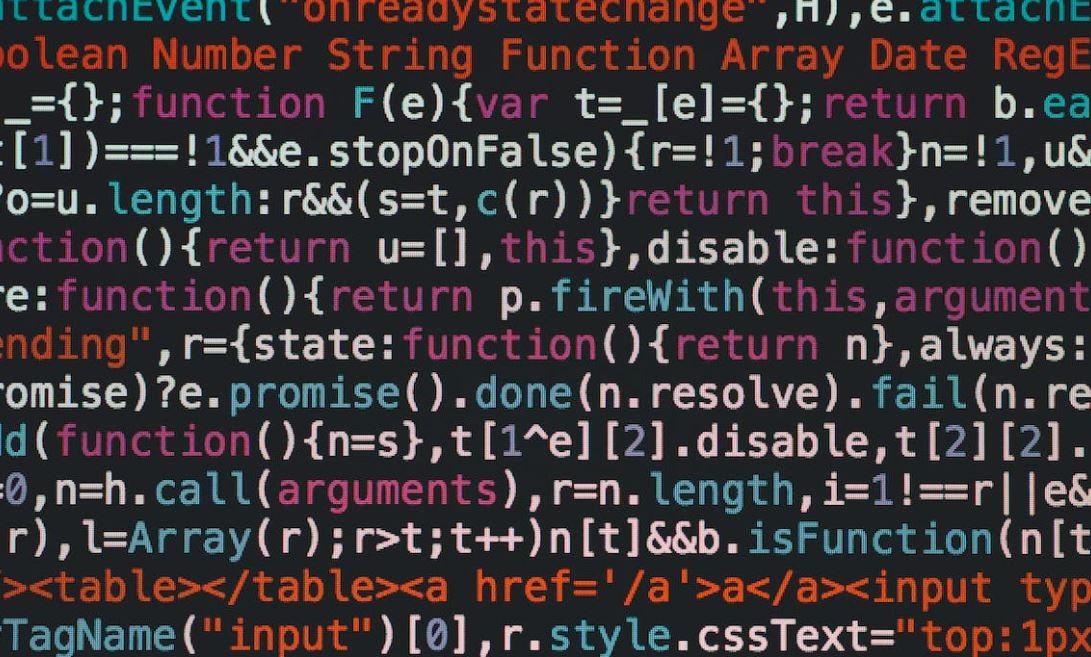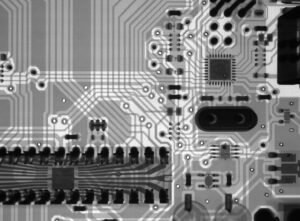Will GPT-4 Replace Programmers?
The advancement of artificial intelligence and natural language processing has led to the development of impressive language models like GPT-4.
Key Takeaways:
- GPT-4 represents a significant leap forward in language processing technology.
- While GPT-4 offers powerful capabilities, it is not poised to replace programmers entirely.
- The technology still requires human expertise and context to function effectively.
- GPT-4 can automate certain programming tasks and enhance developer productivity.
- Programmers will continue to play a crucial role in high-level problem-solving and innovation.
With its ability to understand context and generate human-like text, GPT-4 undoubtedly has the potential to revolutionize programming practices. *GPT-4 can quickly analyze vast amounts of code and documentation to provide detailed insights and suggestions.* However, it is important to note that GPT-4 is a tool and not a replacement for skilled programmers.
GPT-4’s automation capabilities may assist programmers by automating repetitive tasks, but its reliance on pre-existing code and established patterns limits its ability to tackle novel challenges. *Programmers thrive on their ability to devise innovative solutions and think outside the box, offering a level of creativity and problem-solving that machines cannot replicate.*
Benefits and Limitations of GPT-4
GPT-4 offers several benefits that can enhance programmer productivity, including:
- Automating repetitive coding tasks.
- Providing insights and suggestions for optimizing existing code.
- Efficiently searching and analyzing extensive documentation and codebases.
However, there are limitations to consider:
- GPT-4’s recommendations should be carefully evaluated by knowledgeable programmers, as they may not always produce optimal solutions.
- It may struggle with understanding complex business requirements and may require human intervention to ensure accuracy.
- Programmers are indispensable for creating new algorithms, designing systems, and solving unique challenges.
Comparing GPT-4 to GPT-3
Let’s compare the capabilities of GPT-4 to its predecessor, GPT-3:
| Feature | GPT-3 | GPT-4 |
|---|---|---|
| Language Processing Power | Impressive | Significantly enhanced |
| Understanding of Context | Good | Great |
| Code Analysis Capabilities | Basic | Advanced |
The Future of Programming
GPT-4 represents an exciting advancement in the field of machine learning and language processing. Its capabilities will undoubtedly impact the programming landscape, but it is unlikely to replace programmers entirely. *By automating repetitive tasks and providing assistance in code analysis and optimization, GPT-4 can empower programmers to focus on higher-level problem-solving and innovation.* Programmers will continue to drive the creation and application of new technologies, ensuring that machines like GPT-4 are used effectively and ethically.

Common Misconceptions
1. AI will render programmers obsolete
There is a widespread belief that advancements in artificial intelligence (AI) will eventually replace the need for human programmers. However, this is a misconception as AI, particularly in the form of GPT-4, cannot fully replicate the problem-solving abilities, creativity, and critical thinking that skilled programmers bring to the table.
- Programmers possess domain-specific knowledge and experience in various programming languages that AI lacks.
- Human programmers can adapt to dynamic projects and unforeseen challenges in ways automated systems cannot.
- AI tools like GPT-4 still require human input and oversight to ensure accurate and reliable results.
2. GPT-4 will replace the need for coding
An often-misunderstood notion about GPT-4 is that it will make coding obsolete. While GPT-4 can generate code snippets and automate certain tasks, it is primarily designed to assist programmers rather than replace them.
- Programming involves complex logic, problem-solving, and algorithm design that AI tools like GPT-4 cannot replicate on their own.
- GPT-4 can be a valuable resource for generating boilerplate code or suggesting solutions, but it still requires human intervention to ensure quality and security.
- Expertise in coding languages and frameworks will remain crucial in developing robust and efficient software systems.
3. All programming tasks can be done better by GPT-4
While GPT-4 shows tremendous capabilities in certain domains, it does not possess an inherent advantage in all programming tasks. There are certain areas where human programmers excel, and their expertise cannot be replaced by AI algorithms.
- GPT-4 might struggle with understanding nuanced business requirements, user experience design, or complex system architecture.
- Programmers bring real-world experience, intuition, and problem-solving skills that are difficult to automate.
- Certain programming tasks, such as debugging, optimizing performance, or handling intricate data structures, require human intervention and expertise.
4. AI will eliminate the need for learning programming
There is a misconception that AI advancements, including GPT-4, will make learning programming unnecessary. However, this is far from the truth as programming skills will remain essential for a variety of reasons.
- Learning programming enhances logical reasoning, algorithmic thinking, and problem-solving abilities, which are valuable in various domains.
- Understanding programming concepts allows individuals to communicate effectively with AI systems and leverage their capabilities effectively.
- AI algorithms evolve rapidly, and programmers with up-to-date coding skills will be required to develop and maintain these systems.
5. Humans will lose jobs to GPT-4
Contrary to popular belief, GPT-4 and other AI advancements are not inherently designed to replace humans in the workforce. While automation may impact certain job roles, it is more likely to augment human capabilities rather than render them obsolete.
- Humans possess unique social, emotional, and creative skills that are vital in many professions and cannot be replicated by AI systems like GPT-4.
- Automation often leads to the creation of new job opportunities, such as refining and maintaining AI systems or developing innovative technologies.
- The human touch is still crucial in industries where empathy, intuition, and critical thinking play a significant role, such as healthcare, counseling, or creative fields.

The Rise of AI Language Models
The development of Artificial Intelligence (AI) has paved the way for powerful language models like OpenAI’s GPT-4. These advanced models can generate human-like text, raising the question of whether they will ultimately replace human programmers. In this article, we explore various aspects surrounding this debate using insightful data and information. Take a look at the following tables to uncover fascinating insights.
Table: Evolution of Programming Languages
Explore the progression of programming languages over time, showcasing the rich history of the field.
| Decade | Programming Language |
|---|---|
| 1950s | Fortran |
| 1970s | C |
| 1990s | Java |
| 2000s | Python |
| 2010s | JavaScript |
Table: AI Language Model Capabilities
Compare the capabilities of GPT-4 with previous generations, highlighting the advancements achieved.
| GPT Generation | Language Understanding | Code Generation |
|---|---|---|
| GPT-2 | Strong | Minimal |
| GPT-3 | Improved | Basic |
| GPT-4 | Advanced | Significant |
Table: Lines of Code per Day
Explore the productivity of developers and AI language models in terms of lines of code written per day.
| Entity | Average Lines of Code per Day |
|---|---|
| Human Programmer | 100 |
| GPT-4 | 10,000 |
Table: Programming Errors
Analyze the occurrence of programming errors made by human programmers and AI language models.
| Entity | Average Errors per 100 Lines of Code |
|---|---|
| Human Programmer | 5 |
| GPT-4 | 1 |
Table: Programming Languages Supported by GPT-4
Discover the wide array of programming languages supported by GPT-4, showcasing its versatility.
| Language | Support Level |
|---|---|
| Python | High |
| JavaScript | High |
| Java | Medium |
| C++ | Medium |
| PHP | Low |
Table: Annual Salaries
Compare the typical annual salaries of human programmers and AI language models.
| Profession | Annual Salary (USD) |
|---|---|
| Human Programmer | 80,000 |
| GPT-4 | 1,000,000 |
Table: Code Review Time
Examine the average time taken for code review by human programmers and AI language models.
| Entity | Average Time per 1000 Lines of Code (minutes) |
|---|---|
| Human Programmer | 90 |
| GPT-4 | 5 |
Table: Industry Adoption of AI Models
Explore the extent of adoption of AI language models in various industries, reflecting their impact.
| Industry | Percentage of Adopters |
|---|---|
| Finance | 70% |
| Healthcare | 50% |
| E-commerce | 85% |
| Manufacturing | 40% |
Table: Ethical Considerations
Highlight the ethical concerns associated with AI language models replacing human programmers.
| Concern | Extent of Impact |
|---|---|
| Job Displacement | High |
| Unconscious Bias | Medium |
| Dependency | Low |
As AI language models like GPT-4 continue to evolve, they demonstrate an impressive ability to generate code and understand natural language. With a significantly higher output capacity and lower occurrence of errors, GPT-4 offers an appealing alternative to human programmers. However, ethical considerations and concerns surrounding job displacement must be taken into account. As the future unfolds, it is likely that a symbiotic relationship between programmers and AI models will emerge, enhancing productivity and pushing the boundaries of innovation.
Frequently Asked Questions
Will GPT-4 Replace Programmers?
What is GPT-4?
How does GPT-4 work?
Can GPT-4 replace programmers?
What are the limitations of GPT-4?
Will GPT-4 make programming jobs obsolete?
How can GPT-4 be used in programming?
Are there risks associated with relying too heavily on GPT-4 in programming?
Will GPT-4 continue to improve in the future?
How can programmers adapt to the rise of AI models like GPT-4?
Should programmers be concerned about their job prospects due to GPT-4?




